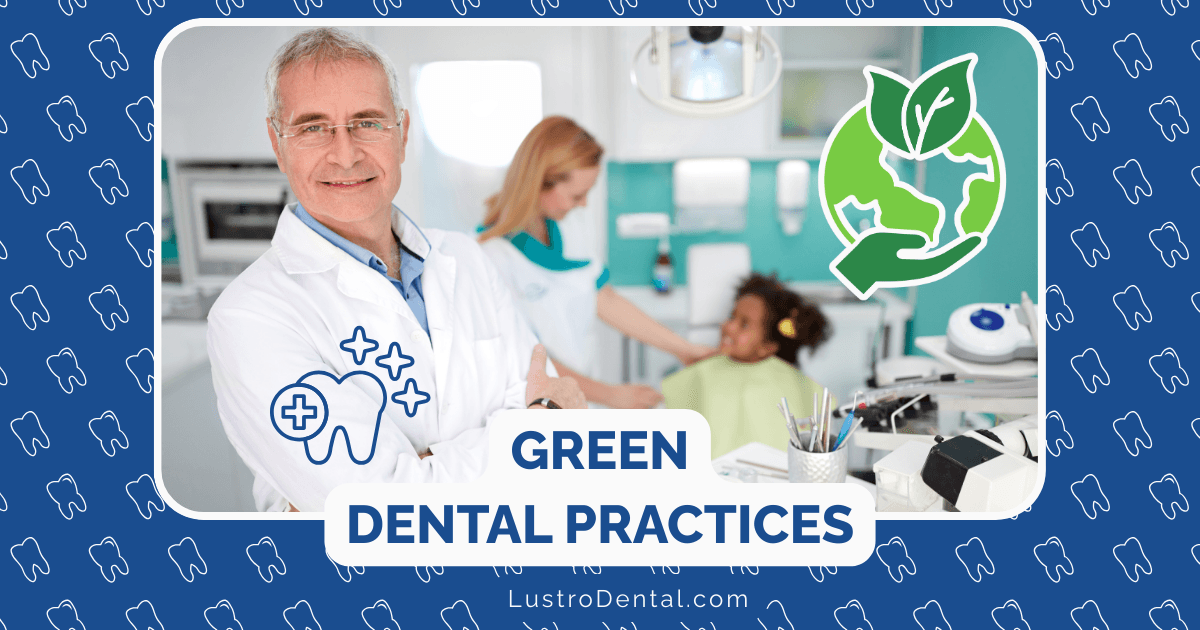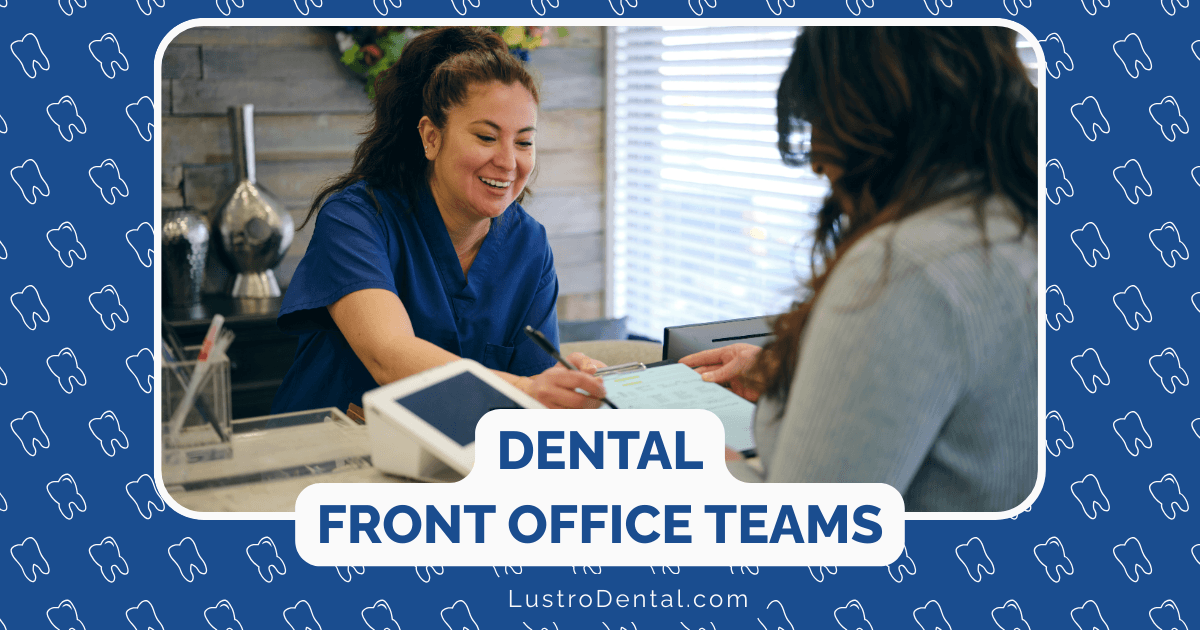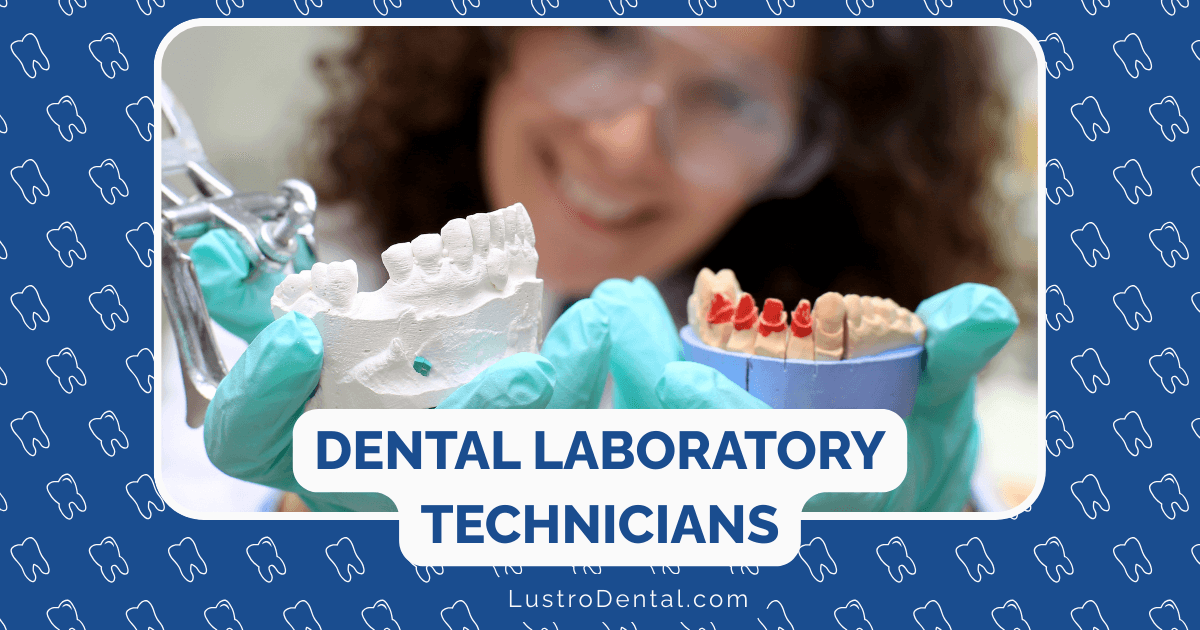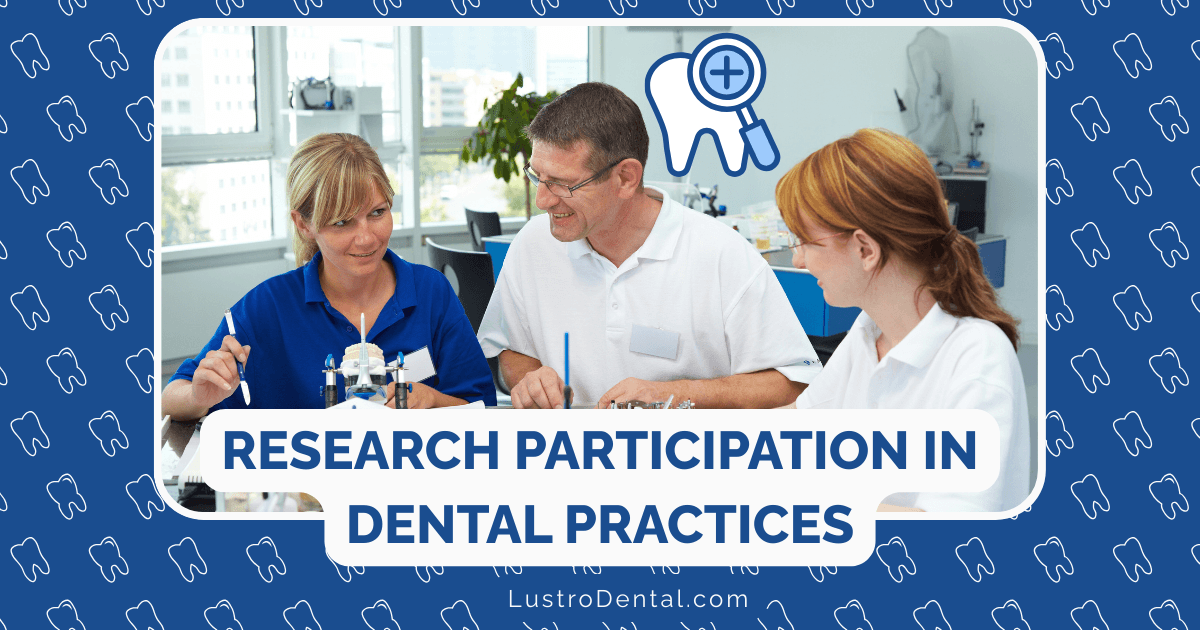Green Dental Practices: What Makes a Dental Office Environmentally Friendly

When you think about industries with significant environmental impacts, dentistry might not immediately come to mind. However, the average dental practice generates substantial waste, consumes considerable energy and water, and uses various chemicals and materials that can impact our planet.
The good news? A growing movement called “green dentistry” is transforming how dental care is delivered—reducing environmental impacts while often improving patient experiences and practice efficiency.
According to the Eco-Dentistry Association, green dentistry is defined as “a high-tech approach that reduces the environmental impact of dental practices and encompasses a service model for dentistry that supports and maintains wellness.” But what exactly makes a dental practice “green,” and why should you care as a patient or practitioner?
The Environmental Impact of Traditional Dentistry
Before exploring solutions, it’s important to understand the environmental challenges within conventional dental practices:
Waste Generation
A typical dental office produces significant waste, including:
- Disposable items: Single-use plastic barriers, cups, bibs, and personal protective equipment
- Hazardous waste: Mercury-containing amalgam, lead foil, chemicals, and biomedical waste
- Packaging waste: From dental materials, instruments, and supplies
Research from the American Dental Association indicates that a single dental practice can generate hundreds of pounds of waste annually, much of which ends up in landfills or requires specialized disposal.
Resource Consumption
Dental practices are resource-intensive operations:
- Water usage: Traditional dental units can use up to 360,000 gallons of water annually
- Energy consumption: Lighting, heating/cooling, and powering specialized equipment requires substantial electricity
- Material usage: Conventional dental materials often come from non-renewable resources
Chemical Use
Dentistry involves various chemicals that can have environmental impacts:
- Sterilization chemicals: Used to clean instruments and surfaces
- Processing solutions: For traditional X-ray development
- Mercury: Found in dental amalgam fillings
The Four R’s of Green Dentistry
The Journal of Dental Research outlines the “4R” model that forms the foundation of green dentistry practices:
1. Rethink
Green dentistry begins with rethinking traditional approaches:
- Questioning the necessity of disposable items
- Considering the environmental impact of materials and procedures
- Reimagining office systems and workflows to minimize waste
2. Reduce
Reducing consumption across all aspects of dental practice:
- Minimizing energy and water usage
- Decreasing reliance on single-use items
- Limiting the use of toxic chemicals and materials
3. Reuse
Identifying opportunities to safely reuse items:
- Implementing sterilizable instruments instead of disposables
- Using cloth patient bibs instead of paper
- Choosing durable equipment designed for long-term use
4. Recycle
Establishing comprehensive recycling programs:
- Recycling paper, plastic, glass, and metal
- Properly recycling specialized dental waste like amalgam
- Repurposing or donating usable equipment and supplies
Key Elements of an Environmentally Friendly Dental Practice
What specific initiatives transform a conventional dental office into an eco-friendly practice? Here are the core elements:
1. Digital Dentistry
The shift to digital technologies represents one of the most significant advancements in green dentistry:
Digital Imaging
- Digital radiography: Eliminates chemical processing and reduces radiation exposure by up to 80%
- Intraoral cameras: Enhances diagnostic capabilities without additional resource use
- 3D scanning: Replaces physical impressions, reducing material waste
Dr. Sarah Chen, a sustainable dentistry advocate, notes: “Digital X-rays not only eliminate the chemicals and lead foil associated with traditional radiography but also provide superior diagnostic images with less radiation exposure—a win for both the environment and patient safety.”
Paperless Systems
- Electronic health records: Eliminates paper charts and filing systems
- Digital appointment systems: Reduces paper reminder cards and schedules
- Online forms: Allows patients to complete paperwork electronically
Research from the Taiwan Journal of Dental Sciences shows that implementing electronic records can reduce paper usage by up to 90% in a dental practice.
2. Waste Reduction and Management
Effective waste management is central to green dentistry:
Amalgam Management
- Amalgam separators: Capture mercury-containing waste before it enters water systems
- Proper disposal protocols: Ensures hazardous materials are handled safely
The ADA recommends amalgam separators that can capture 95% or more of amalgam waste to prevent environmental contamination.
Recycling Programs
- Comprehensive recycling: For paper, plastic, metal, and glass
- Specialized recycling: For items like lead foil from X-ray packets
- Instrument recycling: Repurposing or properly disposing of old instruments
Single-Use Alternatives
- Reusable sterilization pouches: Replace disposable versions
- Metal suction tips: Instead of plastic disposables
- Cloth patient bibs: Washable alternatives to paper
3. Energy Efficiency
Reducing energy consumption benefits both the environment and the practice’s bottom line:
Efficient Equipment
- Energy Star appliances: Use less electricity while maintaining performance
- LED lighting: Consumes up to 75% less energy than traditional bulbs
- Smart power strips: Eliminate “phantom” power usage from equipment in standby mode
Building Design
- Natural lighting: Maximizes daylight to reduce artificial lighting needs
- Proper insulation: Reduces heating and cooling requirements
- Solar panels: Generate renewable energy on-site
According to the European Federation of Periodontology, energy-efficient measures can reduce a dental practice’s carbon footprint by up to 30%.
4. Water Conservation
Dental practices can dramatically reduce water consumption through:
Efficient Equipment
- Dry vacuum systems: Operate without water, saving thousands of gallons annually
- Water-efficient sterilizers: Use significantly less water than conventional models
- Low-flow faucets: Reduce water usage in sinks throughout the office
Operational Practices
- Water-saving protocols: Turn off water when not actively in use
- Regular maintenance: Promptly repair leaks and optimize equipment
- Water recycling systems: Capture and filter water for reuse where appropriate
Dr. James Wilson of Dr. Best Price Dentistry notes: “Advanced dental units can reduce water usage by up to 80% compared to traditional systems, saving thousands of gallons annually while maintaining excellent clinical outcomes.”
5. Sustainable Materials and Products
The materials used in dental procedures and office operations significantly impact environmental footprint:
Biocompatible Materials
- BPA-free composites: Safer alternatives to traditional materials
- Ceramic and zirconia options: Durable alternatives to metal restorations
- Biodegradable products: From dental floss to patient cups
Eco-Friendly Office Supplies
- Recycled paper products: For necessary paper usage
- Non-toxic cleaning supplies: Safer for staff, patients, and the environment
- Reusable or biodegradable kitchen supplies: For staff break rooms
Sustainable Procurement
- Bulk ordering: Reduces packaging waste and transportation emissions
- Local suppliers: Minimizes shipping distances and supports local economies
- Environmentally certified products: Look for recognized eco-certifications
6. Teledentistry and Efficient Scheduling
How patients interact with the practice also impacts environmental footprint:
Virtual Consultations
- Teledentistry: Reduces unnecessary travel for simple consultations
- Digital communication: Allows for efficient follow-ups without in-person visits
- Remote monitoring: Tracks healing or treatment progress virtually
Optimized Scheduling
- Clustered appointments: Scheduling similar procedures together reduces equipment sterilization and setup waste
- Efficient patient flow: Minimizes wait times and resource use
- Appropriate appointment intervals: Ensures adequate time without wasted resources
A study by the European Federation of Periodontology found that patient travel accounts for 64.5% of emissions associated with dental services, making teledentistry a significant opportunity for environmental impact reduction.
Benefits of Green Dental Practices
Implementing environmentally friendly practices offers advantages beyond environmental protection:
For Dental Practices
- Cost savings: Reduced utility bills and supply costs
- Regulatory compliance: Meeting increasingly stringent environmental regulations
- Marketing advantage: Attracting eco-conscious patients
- Staff satisfaction: Creating a healthier workplace and aligning with employee values
For Patients
- Reduced chemical exposure: Less exposure to potentially harmful substances
- Enhanced safety: Digital technologies often improve diagnostic accuracy
- Convenience: Digital systems and teledentistry offer more flexible care options
- Values alignment: Supporting businesses that match personal environmental values
For the Community
- Reduced pollution: Less waste in landfills and fewer toxins in water systems
- Resource conservation: Preserving water and energy for other uses
- Public health protection: Proper waste management prevents contamination
- Climate impact reduction: Lower carbon footprint helps mitigate climate change
How to Identify a Truly Green Dental Practice
As a patient seeking environmentally responsible dental care, look for these indicators:
Certifications and Memberships
- GreenDOC™ Certification: From the Eco-Dentistry Association
- LEED Certification: For environmentally designed office buildings
- Membership in sustainable dentistry organizations: Such as the Green Dentistry Network
Visible Practices
- Digital systems: Electronic forms, digital X-rays, paperless billing
- Water conservation measures: Low-flow fixtures, dry vacuum systems
- Energy efficiency: LED lighting, energy-efficient equipment
- Waste reduction: Visible recycling stations, reusable items instead of disposables
Communication
- Transparent policies: Clear information about environmental initiatives
- Patient education: Materials explaining sustainable approaches
- Staff knowledge: Team members who can explain eco-friendly procedures
Dr. Lisa Chen of The Smile Centre suggests: “Don’t hesitate to ask your dental provider about their environmental practices. A truly green practice will be proud to share their initiatives and how they’re working to reduce their environmental footprint.”
The Future of Green Dentistry
The field of sustainable dentistry continues to evolve:
Emerging Technologies
- Biodegradable dental materials: Research into fully biodegradable alternatives
- AI-optimized resource usage: Artificial intelligence that minimizes waste and maximizes efficiency
- Advanced water recycling systems: Closed-loop systems that dramatically reduce water consumption
Industry Shifts
- Manufacturer responsibility: Growing pressure on dental suppliers to provide sustainable options
- Curriculum changes: Dental schools increasingly incorporating sustainability into education
- Policy developments: Potential regulations requiring environmental best practices
Research Directions
- Life-cycle assessments: Better understanding of the total environmental impact of dental materials
- Patient behavior studies: Research on how to encourage patient participation in green initiatives
- Economic analyses: Quantifying the business case for sustainable dentistry
Taking Action: Steps Toward Greener Dental Care
For Dental Professionals
- Start with an environmental audit: Assess current practices and identify opportunities
- Prioritize changes: Begin with high-impact, low-cost initiatives
- Engage the entire team: Train staff and encourage suggestions
- Communicate with patients: Share your environmental commitment
- Join sustainable dentistry networks: Connect with like-minded professionals
For Patients
- Choose green dental providers: Support practices committed to sustainability
- Ask questions: Inquire about environmental practices
- Follow recommendations: Participate in digital communications and teledentistry when appropriate
- Provide feedback: Let practices know you value their environmental efforts
- Adopt sustainable oral care at home: Use biodegradable floss, bamboo toothbrushes, and water-saving habits
The Bottom Line
Green dentistry represents a significant shift in how dental care is delivered—one that benefits patients, practitioners, and the planet. By reducing waste, conserving resources, and embracing digital technologies, dental practices can provide excellent care while minimizing environmental impact.
As Dr. Michael Roberts of the American Association of Dental Office Managers puts it: “Sustainable dentistry isn’t just about being environmentally responsible—it’s about providing better care through more efficient systems, safer materials, and forward-thinking approaches. It’s dentistry for the future.”
Whether you’re a dental professional looking to make your practice more sustainable or a patient seeking environmentally responsible care, understanding the principles and practices of green dentistry is an important step toward healthier smiles and a healthier planet.
What sustainable practices have you observed in your dental office? Share your experiences in the comments below.







